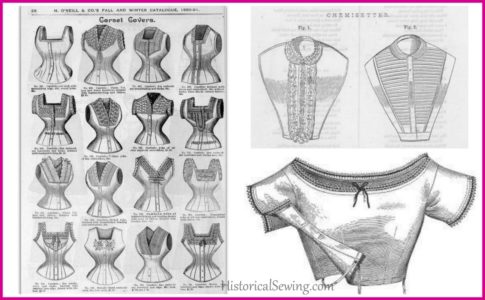
Recently, one of my Bustle Day Dress Class students asked me what the difference was between chemisettes and corset covers. Both being items worn under the dress proper (and considering they both start with C), I can see how their purpose and function could be mixed up.
Let’s clear up the confusion with a few definitions and study how these items are worn – both in the 19th century manner and how to add them to your historical reproductions.

Corset Covers
Starting with the corset cover, this garment is rather like a modern camisole to help smooth the lines of a bra or other underwear. This basic undergarment began to be worn generally in the 1860s through the late Victorian decades and on into the Edwardian period.
The main function is to support the silhouette – by hiding corset lines and colors (for when you want to wear that fuchsia silk corset 😉 ).
They protect the outer garments from the hardware used in corsets. It also gave Victorian women who had leisure time something pretty to embroider.
A corset cover is fitted over the figure in lines that match the contemporary fashionable bodice cut (hence, its purpose in supporting the silhouette). It can have more ease than a bodice or underbodice (see below) and can be made with or without sleeves (but the sleeves are nearly always short).
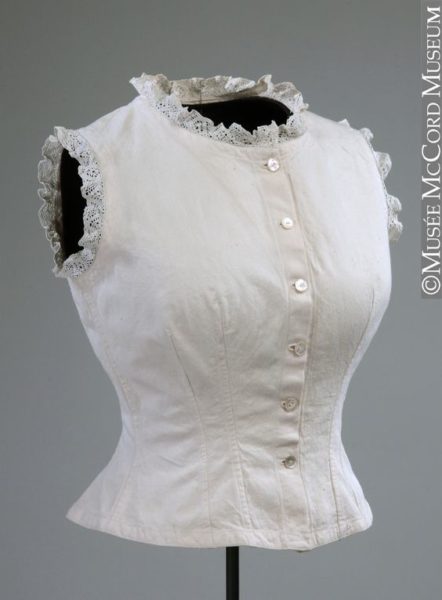
Corset covers are very similar to underbodices and both can be worn interchangeably for many ensembles. They are not visible when fully dressed (with the exception of trim at the neckline). I’ve only seen corset covers with a front closure, usually buttons & holes.
(The Wearing History corset cover pattern makes a pretty modern top too (below) if you wanted to stay in the 21st century with your sewing. You can see my modern version here.)
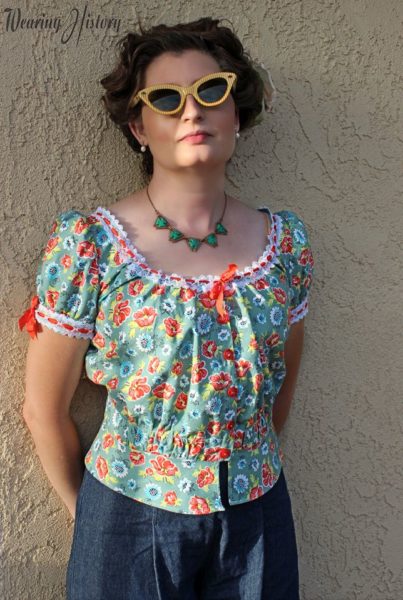
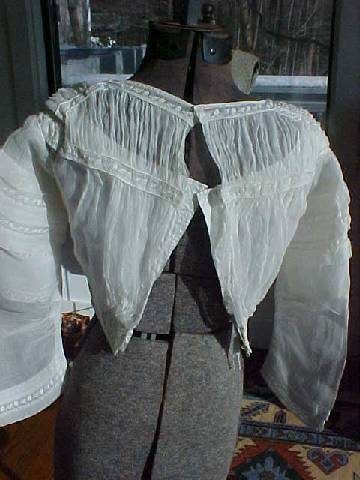
Underbodice
Many costumers get confused with the garment (and name of) underbodice.
Like… it makes sense that it’s not the main dress bodice and is worn under it, but what does it do? Why would someone need an underbodice?
Well, in my research, an underbodice is made sleeveless or with tight sleeves on a fitted bodice-type garment worn as an extra layer for warmth or possibly silhouette support. It’s not unlike the underlining of a bodice but merely made up separately.
Do not confuse an underbodice with a corset cover; although, an underbodice may look and function very similar to a basic cover.
An underbodice is made up like a lining and worn under a sheer dress/bodice for modesty. It could be completely separate from the main dress or the outer bodice mounted on top of it as in the photo of the sheer bodice above.
Generally, it is cut in the same way as the fashionable bodice but might have a lower neckline and shorter sleeves or none at all.
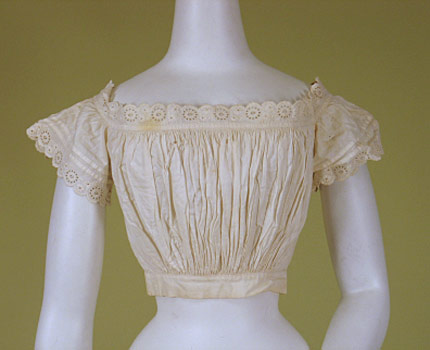
In modern wear it’s like a camisole or tank top worn under another top. For under 19th century ensembles, use a full bodice pattern and trim down the neckline. Be sure to fit your dress bodice over all undergarment layers including your underbodice.
When attaching an underbodice to the main bodice, make up both garments separately then mount the fashion fabric onto the fitted underbodice at the shoulders, bottom hem, and armholes.
An underbodice can be boned to support lighter outer bodice fabric when mounted on top. It can be completely hidden or visible as part of the ensemble.
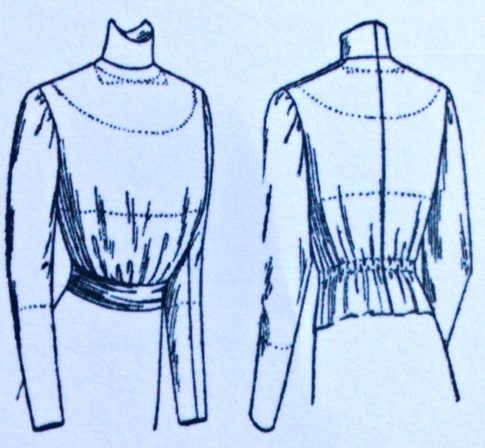
In the Edwardian era, a guimpe of full bodice and sleeves to be worn under a gathered outer bodice could be considered an underbodice.
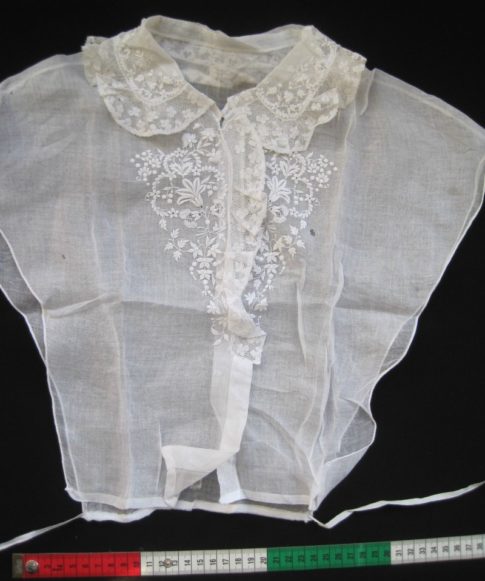
Chemisette
With the chemisette I consider it both an undergarment as well as a fashion accessory for it is worn under a bodice but also changes the look of the ensemble by adding depth and interest. A 19th century chemisette is like today’s modern dickey or modesty panel.
The primary functions of a chemisette are to fill in a low neckline for modesty, add warmth, and to change up the daytime look of a dress or bodice. The upper part and collar of a chemisette is meant to be seen when worn.

In the 1850s and 1860s chemisettes could be complete with attached undersleeves that are visible and fill in the wide pagoda and bell sleeves of the period.
Most Regency through Victorian chemisettes are made simply with a flat panel of fabric in the front and back attached together by shoulder seams or even cut as one piece. These panels can be cut triangular in shape or square. The bottom side edges are connected with ties or left apart.
A few “full” chemisettes are made up like an underbodice with side seams. (Those with sleeves would need a defined armhole and side seam.) These that look more like a regular bodice but are indeed worn under it, I’ve found, are still called a chemisette.
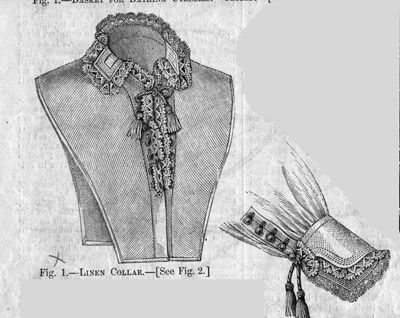
Many, many chemisettes have collars. With some, the purpose of the body panels are there solely to support the collar for wearing under a bodice. In later Victorian decades you’ll find descriptions of “collars” to change up a bodice. These resemble dickeys but could also be called chemisettes – simply with a very small front and back part as something to mount the collar onto.
If anything, using the terms “corset cover” and “underbodice” interchangeably is ok. Although, they are different items. However, a chemisette IS NOT the same.
To get started making your own fashionable set of chemisettes, I recommend the Truly Victorian TV104 pattern as a good base which can be changed up in numerous ways to fit your 19th century ensembles. Also, Janet Arnold’s Patterns of Fashion I has a set of four chemisettes from the early century decades to draft out.
For more visual research, take a stroll through my Old Petticoat Shop Pinterest boards. I have several broken down into chemisettes, corset covers and undergarments from Regency through Edwardian periods.
I encourage you to explore more about these unfamiliar articles. Make them up; add them to your historical wardrobe. Take your costuming up a notch!
Do you wear chemisettes or corset covers? Have you found that they add or detract from your historical ensembles? Share with us in the comments.

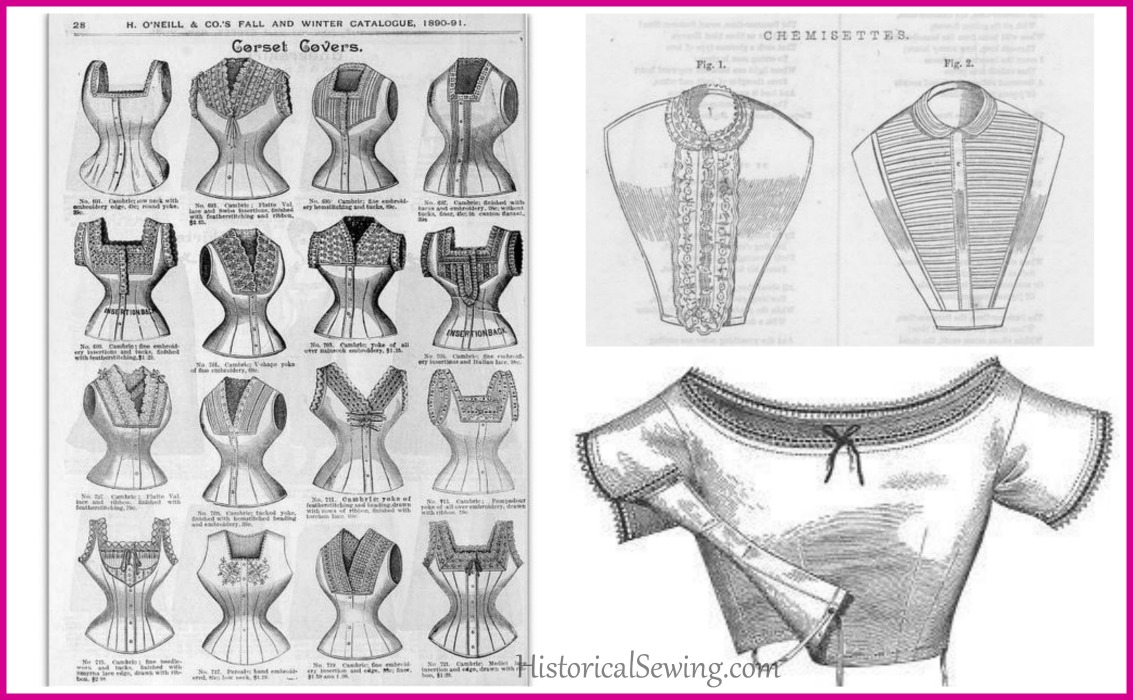
Might I inquire as to the prevailing methods of sewing? I am presently engaged in the creation of a bustle gown from the years 1886 to 1888 and require a corset cover. I have successfully drafted the pattern and cut the cotton fabric; however, I seek guidance on the appropriate types of stitches to employ, as well as whether one ought to utilize hand stitching or machine stitching for this endeavor. Additionally, could you recommend any establishments or websites where I might procure quality reproductions of late 19th-century lace? I appreciate your attention to this correspondence.
Machine or hand stitches are just fine. By the 1880s home sewing machines were quite common. Use straight stitch, hem stitch and possibly flat felled. For lace, Farmhouse Fabrics is most lovely. Also check the Resources page for more.
Thank you so much for this! I am currently making an 1850s gown for a school project and was very confused about the difference between these garments. This was SO helpful!
Glad to hear! And you are welcome. 🙂
What can I use to smooth corset lines in my 1856 ensemble?
A corset cover would be lovely. If you have a V-neck bodice, a chemisette would also be nice.
Good evening I read with great pleasure and saw the delightful photos.
Can I send photos of some pieces in my possession to share the fashion of the time? Can I have an e-mail address? Thanks for a kind reply.
Lavinia
What were chemisettes made of, especially in the 1840s?
From my research, cotton was primarily used and preferred; although linen or linen/cotton blend was used too.
Hi there, I’ve just started my MA in Historical Costume and this article was SO helpful—thank you so much!! I was just wondering, would you wear both a corset cover AND a chemisette or is it one or the other??
Perhaps, but probably not. A chemisette fills in the neckline and a corset cover does not. I suppose one could wear both in cooler weather for the extra layer, but a chemisette can also provide the buffer layer as a corset cover does in concealing ridges of the corset. There’s no “rules” to wearing clothes, so I’m sure it was done (wearing both), but it doesn’t seem like a common occurrence.
What do the rest of you wear under your historical garments? I have shifts, corsets and pantaloons but what about under that? Do you wear modern underwear to protect the garments you have made?
The shift/chemise and drawers are the most basic of historical underwear and protect the other garments. They are made from tightly woven cotton or linen and meant to be washed often. Noting is worn under them. Don’t worry about “protecting” the undergarments. Repair or remake or make new as necessary… just like we do with modern underwear. 🙂
For a 1890s dress, are wearing a pair of combinations or wearing a chemise and drawers equally historically accurate options? I’m not sure which one to go with.
Combinations were quite popular, but separate chemise and drawers were still worn. You’re ok to go either way. 🙂
We have been cleaning out storage rooms at the museum where I work. We came across a heavy white cotton garment that looks like a corset cover, but there were long straps on each side. It almost looks like a strait jacket, but the flaps are not for arms. We’re trying to figure out what it is! Any ideas? I can send a picture. Thank you!
Sounds interesting. Yes, you can email me: sewing AT historicalsewing.com
What was this garment?
What was worn under the corset to protect it and keep it clean?
That would be the most basic of undergarments: the chemise. Find patterns in my post here, and the best fabrics for them in this post.
I am having trouble understanding what was worn under a corset to protect from body oils and the rough corset materials?
That would be a chemise which is different from the items covered here. More posts on chemises: fabrics for them, patterns to use; patterns for beginners and wearing your chemise.
I made a chemisettes from an original Regency era one, I saw on Pinterest. I used sheer striped linen from India & silk ribbon. I did it in a whole piece as I was concerned the seams might irritate my shoulders.
That’s wonderful! And you do see chemisettes cut as one piece. Although, they do take more yardage lengthwise that way.
Thank you for this informative article with such lovely pictures. . It does clear up much of the confusion I also had about the purpose of these garments. I have a questions about the corset covers. In my research I have always seen them made of fine cotton. Recently I was speaking with a fellow costumer that suggested that they were and should be made of silk as they would reduce bulk as well as allow the dress to easily slide over the dress. Have you ever seen them made of silk?
I believe most corset covers were in cotton or cambric (the linen/cotton blend in the Victorian era). Of course, silk could be used, but a fine silk like habotai (aka China silk). Silk holds in heat so I wouldn’t recommend it for summer or warm weather wear. As to the dress “sliding easily”, that is where a nice underlining fabric comes in. Polished cotton, sateen and silks would be used to prevent the “stickiness” of the dress to the cotton undergarments. And you’ll find beautiful cottons in thin weights and gentle hand that would rival some silks, so using silk wouldn’t necessarily reduce bulk.
I would add that silk being used for corset covers would have come in the late Victorian years and into the Edwardian era. I just don’t think it was as prevalent as cotton.
This seems like a good opportunity to ask something that I’ve been wondering: what should be worn under a riding habit bodice (like TV464)? A chemisette or some kind of shirt or underbodice…?
I haven’t studied riding habits in depth, but I’d suggest a chemisette would be fine. For colder weather riding, an underbodice for warmth would work. I wouldn’t put a shirt under the bodice as, in my studies of the era, this wouldn’t be done. But the underbodice is the same idea.